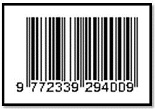Pear Deck and Pocable Game on Students’ Vocabulary Knowledge
Abstract
Keywords
Full Text:
PDFReferences
Pham Thi To Nhu and T. N. Q. Quyen, “Improving Vocabulary Learning with Memrise Mobile Application for,” Int. J. E-Learning Pract., vol. 4, pp. 61–75, 2021.
M. Alqahtani, “The Importance of Vocabulary in Language Learning and How To Be Taught,” Int. J. Teach. Educ., vol. III, no. 3, pp. 21–34, 2015, doi: 10.20472/te.2015.3.3.002.
R. Fransiska and Jurianto, “The Use of Drilling Technique in Teaching English Vocabulary,” Anglicist, vol. 5, no. 2, pp. 125–131, 2016.
W. Hamer and N. A. Rohimajaya, “Using Flash Card as Instructional Media to Enrich the Students’ Vocabulary Mastery in Learning English,” J. English Lang. Stud., vol. 3, no. 2, p. 167, 2018, doi: 10.30870/jels.v3i2.3875.
Purwanto, Evaluasi Hasil Belajar. Yogyakarta: Pustaka Pelajar, 2014.
N. V. F. Liando, D. P. Tatipang, G. Tamboto, M. Poluan, and M. Manuas, “Pictures as a Learning Media in Teaching Vocabulary,” J. Ilm. Univ. Batanghari Jambi, vol. 22, no. 3, p. 1944, 2022, doi: 10.33087/jiubj.v22i3.2832.
F. Haryani and N. Ayuningtyas, “The Impact of Interactive Online Learning by Pear Deck During COVID-19 Pandemic Era,” J. Phys. Conf. Ser., vol. 1957, no. 1, 2021, doi: 10.1088/1742-6596/1957/1/012006.
M. Munawarah, R. Ramli, and S. Sudirman, “Using The Jakarta Post (Daily News) to Improve Academic English Vocabulary of The United English Forum (UEF) Members In Makassar,” Bosowa J. Educ., vol. 1, no. 1, pp. 41–44, 2020, doi: 10.35965/bje.v1i1.614.
R. Sulistyaningrum, Y. M. Hidayati, S. Sutama, and A. Desstya, “Pemanfaatan Media Pear Deck dan Jamboard dalam Pembelajaran Matematika di Masa Pandemi Covid-19,” J. Basicedu, vol. 5, no. 5, pp. 4169–4179, 2021.
Z. Hashim and A. Abd Aziz, “Use of Pear Deck as an Interactive Tool in Teaching Reading Comprehension During the New Normal,” Int. J. Acad. Res. Bus. Soc. Sci., vol. 12, no. 3, pp. 205–219, 2022, doi: 10.6007/ijarbss/v12-i3/12294.
S. A. Stahl, Four Problems with Teaching Word Meanings. Teaching and Learning Vocabulary: Bringing Research To Practice. 2004.
N. Schmitt, Vocabulary in Language Teaching. Cambridge: Cambridge University Press, 2000.
M. L. Aebersold, J. A., & Field, From Reader to Reading Teacher: Issues and Strategies for Second Language Classrooms. Cambridge University Press, 1997.
R. C. Anderson and P. Freebody, Comprehension and teaching: Research reviews. 1981.
N. Nouri, N. Nouri1, and B. Zerhouni2, “The Relationship between Vocabulary Knowledge and Reading Comprehension among Moroccan EFL Learners Second Language Writing from an Intercultural Rhetoric Perspective View Project Frequency Effect View Project the Relationship between Vocabulary Knowledge,” IOSR J. Humanit. Soc. Sci. (IOSR-JHSS, vol. 21, no. 10, pp. 19–26, 2016, doi: 10.9790/0837-2110051926.
I. S. P. Nation, Learning vocabulary in another language. Cambridge: Cambridge University Press, 2001.
I. S. P. Nation, Teaching and Learning Vocabulary. New York: Newbury House, 1990.
K. Yunus and M. S. Saifudin, “Vocabulary Learning Strategies among English as Second,” J. Qual. Soc. Sci., vol. 1, no. 1, pp. 12–19, 2019.
Dave Willis, The Lexical Syllabus: A New Approach to Language Teaching, First Edit. London: Collins CoBUILD, 1990.
J. McCarten, Teaching Vocabulary: Lessons from The Corpus, Lessons from The Classroom. 2007.
A. W. Arwandi, H. Syarif, and H. Ardi, “Improving Students’ Vocabulary Through Words Games at Grade VI of SDS Setia Padang,” vol. 463, pp. 183–186, 2020, doi: 10.2991/assehr.k.200819.036.
T. Mariah, Y. Yusanti, and U. N. El Fauziah, “Students’ Perception of Using ‘Dictionary Pocket’ As a Medium To Improve Their Vocabulary Mastery,” Proj. (Professional J. English Educ., vol. 2, no. 3, p. 319, 2019, doi: 10.22460/project.v2i3.p319-324.
R. Fauziah, H. Hadiyanto, Y. Miaz, and Y. Fitria, “Pengaruh Model Sains Teknologi Masyarakat terhadap Aktivitas Dan Hasil Belajar Siswa di Sekolah Dasar,” J. Basicedu, vol. 5, no. 5, pp. 3203–3215, 2021, doi: 10.31004/basicedu.v5i5.1315.
Anita Adesti and Siti Nurkholimah, “Pengembangan Media Pembelajaran Berbasis Android Menggunakan Aplikasi Adobe Flash Cs 6 Pada Mata Pelajaran Sosiologi,” Edutainment J. Ilmu Pendidik. dan Kependidikan, vol. 8, no. 1, pp. 27–38, 2020, doi: 10.35438/e.v8i1.221.
A. Jaelani and D. R. Sutari, “Students’ Perception of Using Duolingo Application As a Media in Learning Vocabulary,” 2nd Bogor English Teach. Conf., pp. 40–47, 2020.
A. A. Juanis, J. A. Mundu, and J. S. Tati, “Student’s Engagement with Interactive Online Learning by Pear Deck” March, 2023.
S. Sengsri and K. J. Anggoro, “Students’ Perceptions of Content and Language Integrated Pedagogy via Electronic Communication (E-Clip),” World J. Educ. Technol. Curr. Issues, vol. 13, no. 1, pp. 54–67, 2021, doi: 10.18844/wjet.v13i1.5363.
C. Liu, S. Sands-Meyer, and J. Audran, “The Effectiveness of the Student Response System (SRS) in English Grammar Learning in a Flipped English as a Foreign Language (EFL) Class,” Interact. Learn. Environ., vol. 27, no. 8, pp. 1178–1191, 2019, doi: 10.1080/10494820.2018.1528283.
A. Hurlbut and K. Dunlap, “Tools for Seamless Teaching in Online and Hybrid Contexts,” Soc. Inf. Technol. Teach. Educ. Int. Conf., no. 2013, pp. 460–465, 2019.
K. J. Anggoro, “Pear Deck,” RELC J., vol. 52, no. 3, pp. 645–647, 2021, doi: 10.1177/0033688220936735.
D. F. Sari, Y. Q. Yusuf, S. Wahyuni, and P. Kangkha, “Improving EFL Students’ Vocabulary in a Rural Area through Scrabble with Crossword Picture Puzzle,” J. English Educ. Teach., vol. 7, no. 2, pp. 429–439, 2023.
A. S. K. Atmaja and G. Sonia, “Using Flash Cards to Improve Students’ Vocabulary,” Proj. (Professional J. English Educ., vol. 3, no. 2, p. 283, 2020, doi: 10.22460/project.v3i2.p283-289.
P. ( Gay, L. R., Mills, G. E. & Airasian, Educational research: Competencies for analysis and applications., (10th ed.)., vol. 6, no. August. New Jersey: Pearson Education, Inc., Upper Saddle River., 2012.
Moses Adeleke Adeoye and Olaolu Paul Akinnubi, “Integrating Interactive Learning Technologies into Traditional Teaching Methods for Private Higher Education Institutions,” Formosa J. Comput. Inf. Sci., vol. 2, no. 2, pp. 223–234, 2023, doi: 10.55927/fjcis.v2i2.4113.
N. S. Ling and A. Abdul Aziz, “The Effectiveness of Game-based Learning Strategies on Primary ESL Learners’ Vocabulary Learning,” Int. J. Acad. Res. Progress. Educ. Dev., vol. 11, no. 2, 2022, doi: 10.6007/ijarped/v11-i2/13266.
K. J. Anggoro and U. Khasanah, “EFL Students’ Independent Learning with Pear Deck Interactive Slides,” SiSal J., vol. 13, no. 1, pp. 172–176, 2022, doi: 10.37237/130111.
S. Mardiana, “Pengaruh Model Learning Together (belajar bersama) dalam Memahami Wacana Tulis di Kelas XI SMA RK Delimurni Delitua,” Sintaks J. Bhs. Sastra Indones., vol. 1, no. 1, pp. 4–8, 2021, doi: 10.57251/sin.v1i1.114.
H. Akram, A. H. Abdelrady, A. S. Al-Adwan, and M. Ramzan, “Teachers’ Perceptions of Technology Integration in Teaching-Learning Practices: A Systematic Review,” Front. Psychol., vol. 13, no. June, pp. 1–9, 2022, doi: 10.3389/fpsyg.2022.920317.
R. A. Dalimunthe, R. Efendi, and M. Lubis, “Challenges of Islamic Teachers in Implementing the Tahfiz Qur’an Program During the Covid-19 Pandemic,” … Int. Semin. …, vol. 2, pp. 882–889, 2021.
S. Salim, A. M. Basri, D. L. Husain, A. N. Hidayah, and N. Nurhayati, “the Use of Digital Literacy in Higher Education,” Al-Ishlah J. Pendidik., vol. 12, no. 1, pp. 52–66, 2020, doi: 10.35445/alishlah.v12i1.197.
N. A. Jogezai, F. A. Baloch, M. Jaffar, T. Shah, G. K. Khilji, and S. Bashir, “Teachers’ Attitudes towards Social Media (SM) Use in Online Learning amid the COVID-19 Pandemic: The Effects of SM Use by Teachers and Religious Scholars during Physical Distancing,” Heliyon, vol. 7, no. 4, p. e06781, 2021, doi: 10.1016/j.heliyon.2021.e06781.
S. Y. Chen, C. Y. Hung, Y. C. Chang, Y. S. Lin, and Y. H. Lai, “A Study on Integrating Augmented Reality Technology and Game-Based Learning Model to Improve Motivation and Effectiveness of Learning English Vocabulary,” Proc. - 2018 1st Int. Cogn. Cities Conf. IC3 2018, pp. 24–27, 2018, doi: 10.1109/IC3.2018.00015.
A. Ben Youssef, M. Dahmani, and L. Ragni, “ICT Use, Digital Skills and Students’ Academic Performance: Exploring the Digital Divide,” Inf., vol. 13, no. 3, pp. 1–19, 2022, doi: 10.3390/info13030129.
DOI: https://doi.org/10.31764/leltj.v13i1.30046
Refbacks
- There are currently no refbacks.
Copyright (c) 2025 ramli ramli

This work is licensed under a Creative Commons Attribution-ShareAlike 4.0 International License.
_____________________________________________________
Linguistics and ELT Journal
p-ISSN 2339-2940 | e-ISSN 2614-8633

LELTJ is licensed under a Creative Commons Attribution-ShareAlike 4.0 International License.
_____________________________________________________
LELTJ is abstracting & indexing in the following databases:
_____________________________________________________
LELTJ Editorial Office:













